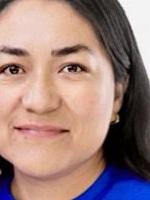

Putting Out the Welcome Mat With Minecraft |
Participate and share : Poster
Valentina Zavaleta Villarreal Cristal Barbosa Ederick Ullrich Juan Pablo Gómez Giles Antonio Serrano Gómez Adriana Prado Oceguera
See how students translated their physical space into a Minecraft-scaled version of their school. This helped students who had never taken classes in person because of COVID restrictions or for other reasons to virtually “walk” through the campus, which created a sense of engagement and community.
| Audience: | Teachers |
| Skill level: | Beginner |
| Attendee devices: | Devices useful |
| Attendee device specification: | Laptop: Chromebook, Mac, PC |
| Topic: | Games for learning & gamification |
| Grade level: | 9-12 |
| Subject area: | STEM/STEAM |
| ISTE Standards: | For Students: Knowledge Constructor
|
| Additional detail: | Student presentation |
In our school there is a cohort of students who have never been inside their campus, because of the COVID lockdown and distant learning. Some of them, if given the chance, will choose not to, due to health restrictions or personal and family preferences. Engaging students and creating a sense of community has never been more urgent and harder to accomplish.
To solve this, a group of students worked together to create a virtual version of our campus using Minecraft Education Edition. Quite difficult since some of them had never set foot in their school. Using photographs, videos and descriptions of senior students, the Minecraft World started to look each day more and more like home. They digitally measured and translated their physical space into a scaled version of our campus. It allowed our students to enhance their creativity, problem-solving, self-direction, collaboration, and sense of community.
Most students have more experience using Minecraft than their teachers, so this allowed for an inverted mentoring, where students taught their teachers how to best build our project. This means, that any teachers, regardless of his or her experience, could replicate this project within their communities. This empowers students because they realize, it’s up to them to solve the problems they’ll run into.
Some of the advantages of this virtual version of our campus is that we can help students from outstate know our facilities, students with disabilities can virtually "walk", and get familiar with what you will find, and our own students learned to see their school in a whole new way. Even if the project is still under construction, new students have sign in, and are interested in participating, hence creating the sense of engagement and community we were looking for at the beginning. All this while teaching students to monitor their own progress and take responsibility for and become self-directed in their learning.
Karsenti, T., Bugmann, J., and Gros, P. P. (2017) Transforming Education with Minecraft? Results of an exploratory study conducted with 118 elementary-school students. Montréal : CRIFPE. https://education.minecraft.net/wp-content/uploads/Minecraft_Research_Report_Karsenti-Bugmann_2017.pdf
Lewis Ellison, T., and Evans, J.N. (2016) Minecraft, Teachers, Parents, and Learning: What They Need to Know and Understand. School Community Journal, 26(2). https://files.eric.ed.gov/fulltext/EJ1123979.pdf
Petrov, A. (2014) Using Minecraft in Education: A Qualitative Study on Benefits and Challenges of Game-Based Education. University of Toronto. https://tspace.library.utoronto.ca/bitstream/1807/67048/1/Petrov_Anton_201406_MT_MTRP.pdf

With a strong background in biological sciences, she has participated in both national and international conferences and collaborated with several research and educational institutes. She’s worked in diverse outreach programs, and taught at various levels, from middle to graduate school, and is now an academic coordinator, responsable of MUN participation, and Science and Language programs at her school. She's an Apple Teacher, in charge of promoting projects and programs that complete her students and, above all, her teachers academic profile.

With a strong background in Computer science, Communication with Virtual Media, Apps development. She was a teacher in the International Baccalaureate Program guiding students to solve real problems through technology. Apple Teacher, Apple professional learning and Google Certified Educator level 2. She Is the coordinator of educational technology in K-12.

